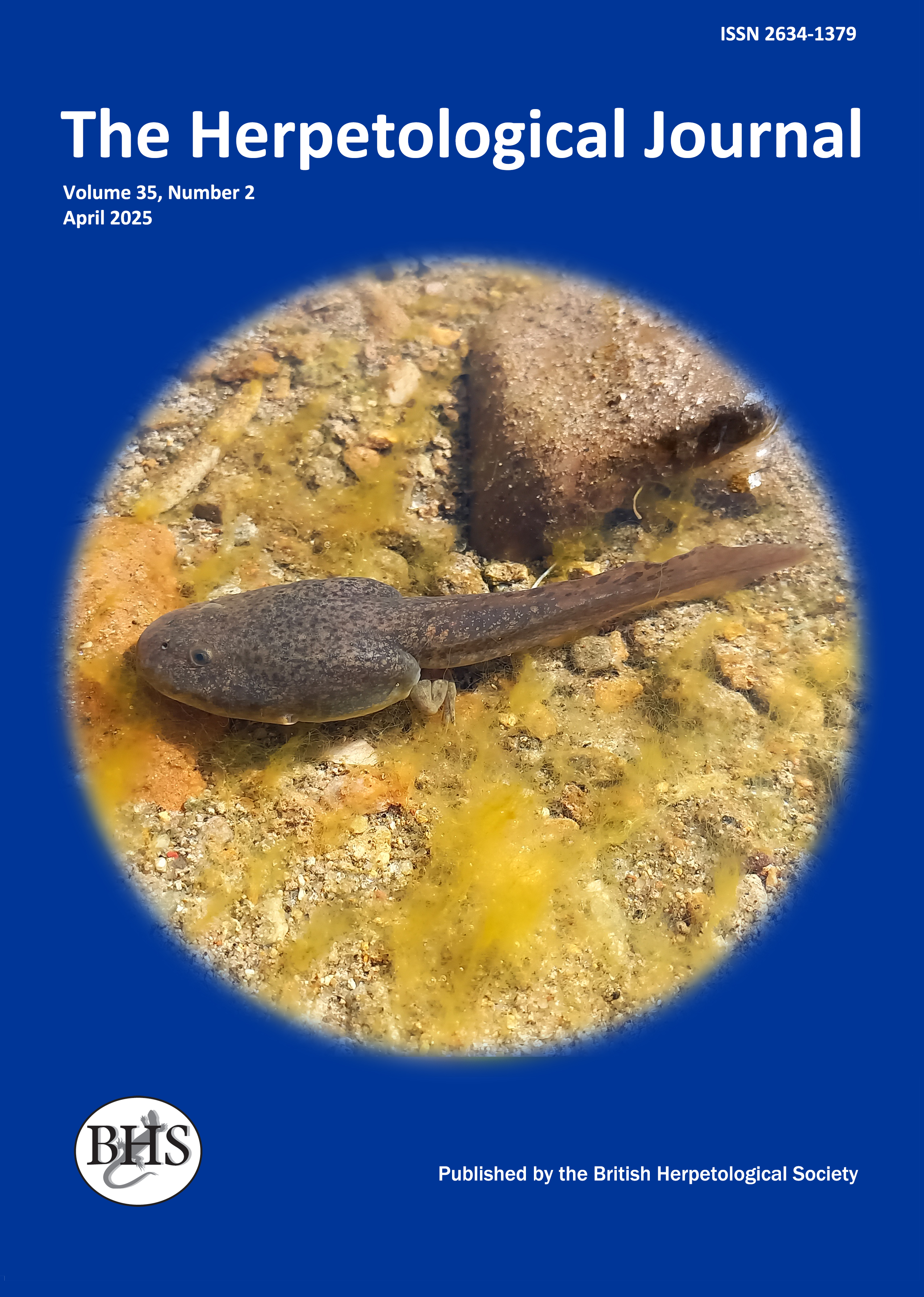
The Herpetological Journal
The Herpetological Journal is the Society's prestigious quarterly scientific journal. Articles are listed in Biological Abstracts, Current Awareness in Biological Sciences,Current Contents, Science Citation Index, and Zoological Record.
ISSN 0268-0130
2021 Impact Factor from Clarivate for the Herpetological Journal is 1.194, an increase of 0.332 from 2020.
pdf 01. Surface ciliation and tail structure in direct-developing frog embryos: a comparison between Myobatrachus gouldii and Pristimantis (= Eleutherodactylus) urichi
1731 downloads
Open Access
pp. 59-68
Authors: Nokhbatolfoghahai, Mohsen; Mitchell, Nicola J. & Downie, J. Roger
Abstract: Surface ciliation in two direct-developing anurans from unrelated lineages, the Australian myobatrachid Myobatrachus gouldii and the South American terraranan Pristimantis urichi, is shown to be broadly similar, persisting on some body regions until close to hatching, suggesting a common need for circulation of fluid inside the jelly layers. The tail of M. gouldii is tadpole-like at its maximum extent though considerably reduced in its axial core and musculature. Its surface epidermis is thin and highly folded in some areas, with blood vessels approaching very close to the surface, consistent with a respiratory role. The tail moves actively when well developed, which may assist with respiratory exchange. The tail in P. urichi has a novel construction, quite different from both M. gouldii and that reported for Caribbean lineage terraranans such as Eleutherodactylus coqui or E. nubicola. In P. urichi, the tail expands laterally and posteriorly, not dorsally and ventrally, and only has a short axial core at its base, suggesting very limited motility: it therefore seems not to be composed of axial core and dorsal/ventral fins. We suggest that this thin-walled vascular structure, applied close to the perivitelline membrane, facilitates respiratory exchange. Discovery of this novel structure suggests that the development of other terraranan embryos needs investigation.
Keywords: AMPHIBIANS, DIRECT DEVELOPMENT, TERRARANA, MYOBATRACHIDAE, CILIATED CELLS

